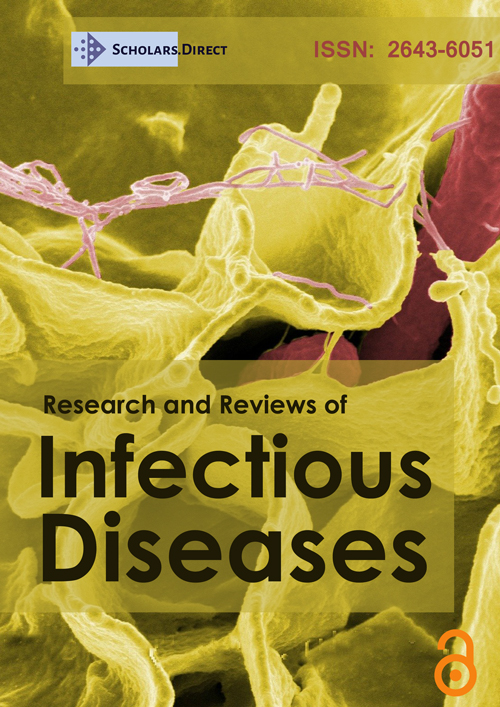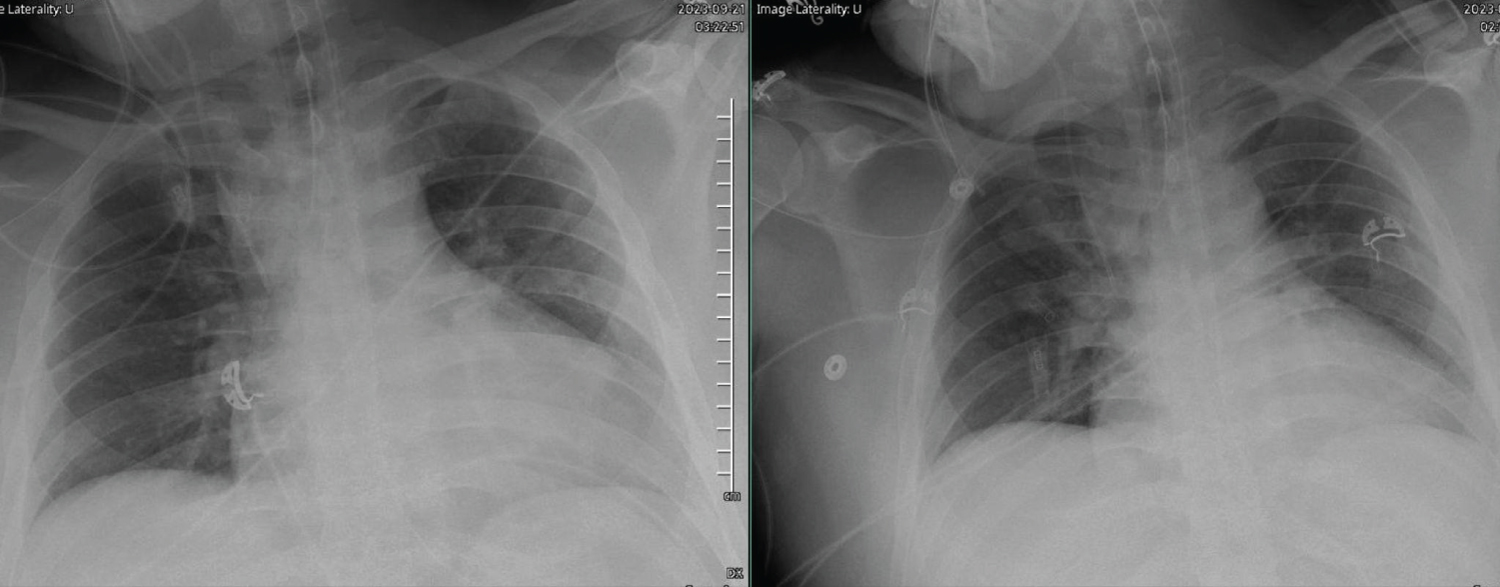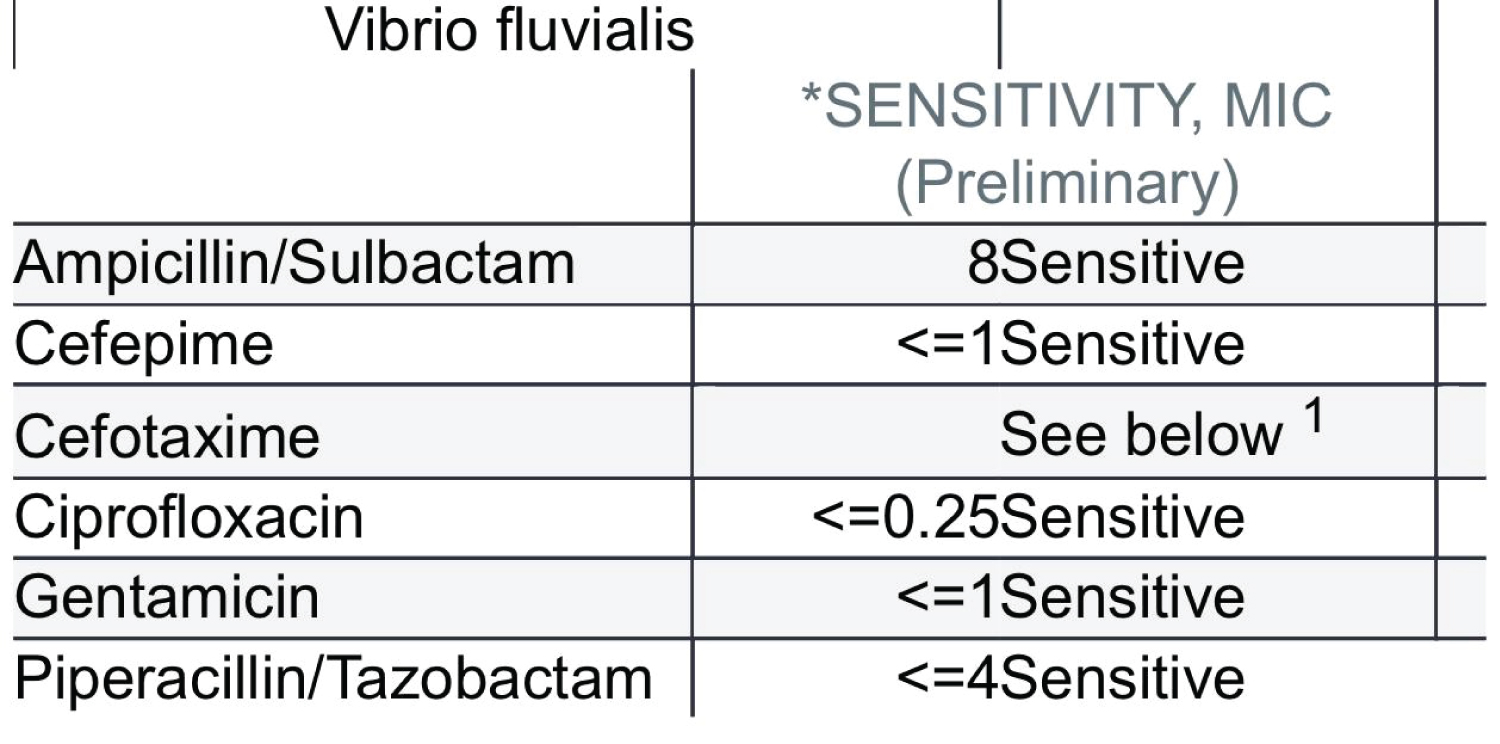A Rare Presentation of Vibrio Fluvialis
Abstract
Pneumonia can be caused by a multitude of pathogens commonly associated with different environments and geographic locations. Due to a variety of factors including changes in water temperatures, air temperatures, and general coastal environments, some pathogens isolated from aquatic regions are becoming more prevalent, with previously uncommon manifestations. We present a case of Vibrio fluvialis manifesting as pneumonia in an adult male with altered mental status. The patient lives in a coastal environment increasing the likelihood of exposure and colonization. Treatment with IV cefepime and transition to oral ciprofloxacin led to the resolution of the disease. This is the first report of V. fluvialis affecting the lungs, unlike its usual gastrointestinal presentation.
Introduction
Vibrio fluvialis is a gram-negative bacterium, commonly associated with coastal environments and feces [1]. V. fluvialis infections are characterized by watery bloody diarrhea, nausea, vomiting, and gastroenteritis [1]. Here, contrary to the common presentation, we report a case of Vibrio fluvialis pneumonia in a 33-year-old male who presented with a left middle cerebral stroke and chest X-ray showing bilateral pulmonary infiltrates with sputum culture positive for Vibrio fluvialis .
Case Report
The patient is a 33-year-old male who presented with a left MCA stroke with hemorrhagic conversion involving the left basal ganglia with associated edema. On the report, the patient had been out drinking the night prior and was last seen by friends when he was left in his car. He was found by family the following day covered in urine, paralyzed on the right side with speech difficulty, right facial droop, difficulty standing up, and altered mental status. He was taken to the emergency room with a suspected stroke and an NIHSS score of 26. CT head revealed left basal ganglia hemorrhage. The patient underwent a left front temporal occipital decompressive craniectomy where he still had dense right hemiparesis and was placed on Keppra.
Due to acute respiratory failure, the patient was intubated. On chest XR he was found to have bilateral pulmonary infiltrates in which a respiratory specimen from bronchial fluid was taken that was positive for Vibrio fluvialis . The patient is from southwest Florida and works building boat docks where he is consistently exposed to seawater. Since no alternative bacterial growth occurred, and the patient was symptomatic with fever, copious amount of endotracheal secretion, and radiological picture of pulmonary infection- he was treated with an initial course of IV Cefepime with the transition to oral ciprofloxacin based on antibiotic susceptibility and completed 10 days of treatment with clinical and radiological improvement. The patient spiked fevers at the beginning of the ABX course but did not continue to spike fevers so meningitis suspicion was low and not indicated to lumbar puncture. He showed improvement on CXR. Upon discharge and transition of care to a rehabilitation center for neurological deficits, the patient was advised to have a follow-up CT scan of the chest in 4 to 6 weeks to ensure that all infiltrates have cleared.
Discussion
Vibrio fluvialis is a gram-negative bacterium apart of the Genus Vibrio which is more recognized for its pathogenic counterparts of V. cholera, V. vulnificus, and V. parahaemolyticus [ 2 ]. This genus is known for inhabiting aquatic environments and have a presence in estuaries and brackish water, as well as the ability to cause havoc on communities who are scarce in resources including sanitation and drinking water [2]. Clinical manifestations have historically been limited to cutaneous manifestations and enteric upset. V. fluvialis has been scarcely reported on in comparison to its familial counterparts, but similarly shows a preference for warm temperatures and salinic environments for bacterial proliferation, making Florida a perfect environment for infection [ 1,3 ].
Of the reviewed literature, V. fluvialis has impacted humans most in resource-poor countries in the form of severe diarrhea. A study performed in Iran isolated strains of V. fluvialis from surface water samples over the course of 6 months and reported 8 cases that manifested as mild fever, watery diarrhea, vomiting, nausea, and abdominal cramps. All subjects in this study self-resolved in a couple of days without antibiotics but pointed to the need for monitoring of food and water [ 4 ].
A case report just from July 2023 highlighted a case of V. fluvialis presenting with skin manifestations of hemorrhagic bullae in an immunocompetent patient with bacteremia after experiencing a diarrheal illness after consuming a variety of seafood, including raw oysters. This diarrhea allowed for fecal matter to run down the patient's leg to infect an exposed wound which can likely be considered the source of pathogenesis in this patient’s case. There are no established guidelines in treating V. fluvialis but the patient resolved with a 14-day course of doxycycline. Of note, the patient was experiencing pancytopenia both at the time of hospitalization and before incidence [5].
Similar to the above patient, our patient lives in a coastal state but more specifically works building docks, allowing for significant water exposure daily. Due to his lifestyle, he was consistently exposed to Vibrio species and colonized.
To our knowledge, this is the first case reported of V. fluvialis in the lungs causing pneumonia (Figure 1). A sputum sample confirmed the pathogen and the infection was responsive to our treatment indicating that this was the only pathogen causing the pneumonia. The health department was notified and reported only having heard of one patient in India potentially having a similar disease. While cases of vibrio-associated illnesses have risen in past years, especially post-hurricane, this is the first in our environment and to the knowledge of all reported literature of this infection (Figure 2).
Conclusion
Vibrio fluvialis and pathogens of similar rarity should not be excluded from consideration even when the presentation is atypical. The exact pathogenicity of this bacteria is still being studied. Still, the epidemiology points to our water sources with usual effects on the enteric system in areas lacking resources and poor water sanitation. However in recent years due to global climate change and human degradation of the environment, water sources could be more potent harbors of pathogens [6]. Due to the patient's line of work, the recent hurricane bringing in new bacteria to our environment and neurologic state, the perfect storm was created for a new route of pathogenicity of Vibrio fluvialis .
References
- Igbinosa EO, Okoh AI (2010) Vibrio fluvialis: An unusual enteric pathogen of increasing public health concern. Int J Environ Res Public Health 7: 3628-3643.
- Ramamurthy T, Chowdhury G, Pazhani GP, et al. (2014) Vibrio fluvialis: An emerging human pathogen. Front Microbial 5: 91.
- Zheng H, Huang Y, Liu P, et al. (2022) Population genomics of the food-borne pathogen Vibrio fluvialis reveals lineage-associated pathogenicity-related genetic elements. Microb Genomics 8: 000769.
- Mohebi S, Saboorian R, Shams S, et al. (2022) the first report of Vibrio fluvialis isolated from a clinical sample in Iran. Iran J Microbial 14: 677-682.
- Smith TJ, Osmanzai Y, Faris M, et al. (2023) Vibrio fluvialis bacteremia with hemorrhagic bullae: A case report. Cureus 15: e42612.
- Lee K (2001) The global dimensions of cholera. Glob Change Hum Health 2: 6-17.
Corresponding Author
Emily Woolhiser, BS, Kansas City University College of Osteopathic Medicine, USA, Tel: 954-849-4466.
Copyright
© 2024 Woolhiser E, et al. This is an open-access article distributed under the terms of the Creative Commons Attribution License, which permits unrestricted use, distribution, and reproduction in any medium, provided the original author and source are credited.






